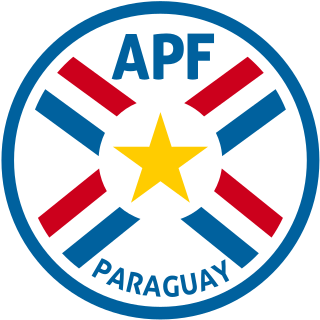
The 1999 Copa América was a football tournament held in Paraguay, from June 29 to July 18. It was organized by CONMEBOL, South America's football governing body.

The Gran Chaco or Dry Chaco is a sparsely populated, hot and semi-arid lowland natural region of the Río de la Plata basin, divided among eastern Bolivia, western Paraguay, northern Argentina and a portion of the Brazilian states of Mato Grosso and Mato Grosso do Sul, where it is connected with the Pantanal region. This land is sometimes called the Chaco Plain.

Estadio Defensores del Chaco is a multi-purpose stadium in Asunción, Paraguay. It is currently used mostly for football matches. The stadium once had a 50,000+ capacity, however over the years the stadium has undergone remodeling, dropping the capacity to 42,354. The stadium was again renovated in 2015.
The 1960 Copa de Campeones de América was the first season of the Copa CONMEBOL Libertadores, CONMEBOL's premier club tournament. Seven association's clubs entered the first competition, with three not sending a representative. The first match of the tournament was played between Uruguayan side Peñarol and Bolivian side Jorge Wilstermann on April 19 in Montevideo, Uruguay.

Club Deportivo Universitario San Francisco Xavier is a professional football team based in Sucre, Bolivia that competes in the Bolivian Primera División.
The 2007 South American Youth Championship is a football competition contested by all ten U-20 national football teams of CONMEBOL. The tournament was held in Paraguay between 7 January and 28 January 2007. It was the 23rd time the competition has been held and the fourth to take place in Paraguay. Brazil finished undefeated, winning their ninth trophy.
Eugenio Félix Morel Bogado is a retired professional footballer.
This is a record of Peru's results at the Copa América. Ever since their first Copa América, Peru has had good showings. It is often remembered by fans that Peru was the 4th team that won the South American cup. Even though in 1939 Peru played against only 5 of the South American nations, in 1975 Peru won the cup once more.
Blas Marcelo Cristaldo is a retired football (soccer) defender and coach from Paraguay. He played professional football in Paraguay for Cerro Porteño and have been coaching the inferior squads of Cerro Porteño for some years now. Even he was interim coach several times in the first division. Currently as an assistant coach on the national team of Paraguay for Brazil 2014.
Felipe Peralta is a retired football (soccer) midfielder from Paraguay. He played professional football in Paraguay, and also had a spell in Colombia, playing for Deportivo Pereira.
Blas Agustin Romero is a retired football (soccer) forward from Paraguay.
The 2011 season is the 101st season of competitive football in Paraguay.

The 2014 Copa América Femenina was the seventh edition of the Copa América Femenina, an association football competition for women's national teams in South America affiliated with CONMEBOL. The tournament was played between 11–28 September 2014 in Ecuador.
The 2014 División Profesional season was the 80th season of top-flight professional football in Paraguay.
The 2015 División Profesional season is the 81st season of top-flight professional football in Paraguay.
The 2016 U-20 Copa Libertadores was the 3rd edition of the U-20 Copa Libertadores, South America's premier under-20 club football tournament organized by CONMEBOL. The tournament, which returned after a four-year hiatus having been temporarily discontinued since 2012, was held in the cities of Asunción and Luque, Paraguay, from 30 January to 14 February 2016.
The 2018 División Profesional season was the 84th season of top-flight professional football in Paraguay. The season began on 2 February and ended on 8 December. Cerro Porteño were the defending champions.
The 1986 South American Under-16 Football Championship was the 2nd edition of the South American Under-17 Football Championship, a football competition for the under-16 national teams in South America organized by CONMEBOL. It was held in Peru from 4 to 19 October 1986.










